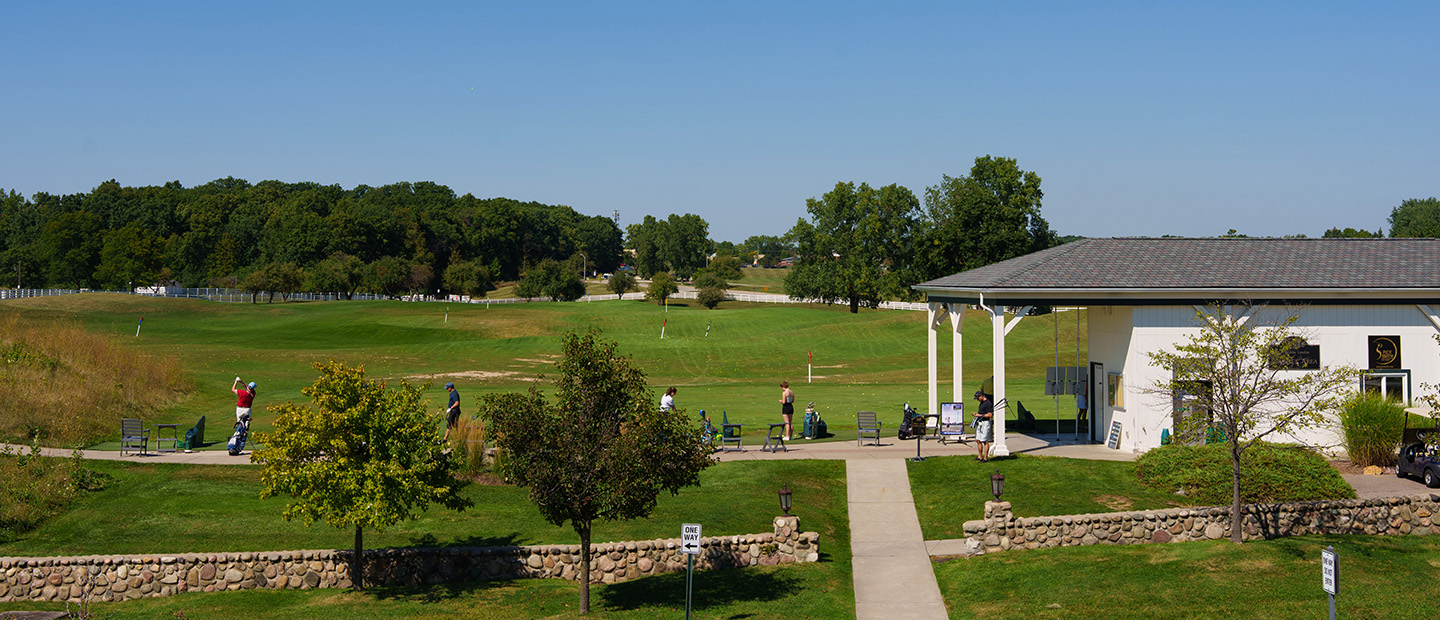
Oakland University Golf Instruction
Oakland University Golf Instruction at The Oakland University Golf & Learning Center is one of the premier golf facilities in Michigan. OU is committed to grow the game of golf by offering cutting-edge golf instruction.
Oakland University Golf Instruction offers customized programs for all golfers — from beginners to PGA Tour players. Our Golf Instruction Program features an elite staff of instructors achieving success by focusing on the fundamentals of the golf swing, keeping a minimal student/teacher ratio to allow for personalized instruction, and using clear communication and state-of-the-art swing analysis video technology.
Call the golf shop at (248) 364-6300 ext. 3 for information.
Book a golf lesson today!
Winter Instruction at Indoor Simulator at OUGLC: Full simulator set up with GC Quad Simulators, Trackman, OnForm Video Analysis, Sports Box AI 3D Analysis, SAM Puttlab Analysis, Chipping Area and Putting Green.
Availability Tuesday through Sunday. To schedule an appointment please email Cam Lippoldt at [email protected] or call (248) 364-6199.
Adult Private Lessons with Cam Lippoldt: A private, 60 minute session with Cam Lippoldt. $150/hour or $675 for a 5 lesson package.
Junior Private Lessons with Cam Lippoldt: A private, 60 minute session with Cam Lippoldt. $90/hour or $405 for a 5 lesson package.
Adult Private Lessons with Jeff Rachar, PGA: A private, 60 minute session with Jeff Rachar. $125/hour or $325 for a 3 lesson package.
Junior Private Lessons with Jeff Rachar, PGA: A private, 60 minute session with Jeff Rachar. $80/hour or $200 for a 3 lesson package.
- Private lessons include video analysis via OnForm, Sportsbox AI, TrackMan, SAM Puttlab (based upon availability) and video recap of lesson.
- All lessons purchased must be used by the end of the calendar year.
TrackMan Custom Club Fitting: Please reach out to the Golf Shop for pricing and scheduling.
Upcoming Clinics
Private Instruction, TPI Fitness Evaluation Clinic
- January 20th, 5 p.m. to 7 p.m.
High School Boys Prep Series
Skill based group training sessions for high school players to help get them ready for the season. Each session has different focus and involves skill building and competition.
- Every Tuesday in February, 5 p.m. to 6 p.m.
- $50 per session, $150 for all 4 sessions.
- 5 to 6 golfers per session.
Ladies Indoor Clinic
- Friday, March 13th, 5 p.m. to 7 p.m., Ladies Sip and Swing, irons and wedges.
- Friday, March 20th, 5 p.m. to 7 p.m., Ladies Sip and Swing, woods and drivers.
- $75 per clinic.
- 4 ladies per session.
OU AP Clinic - TBD
OU Business School Clinic - TBD
Student Clinic
- Friday, April 17th, 5 p.m. to 6 p.m., Driving Range.
- $20 per student to include instruction and range balls.
Swing Fore Success
- Tuesday, May 5th through Tuesday, June 9th, 5 p.m. to 7 p.m.
- $200 for all 4 clinics.
Get Golf Ready
- Thursday, May 7th through Thursday, May 28th, 5 p.m. to 7 p.m.
- $200 for all 4 clinics.
- This clinic includes an on course scramble the last session.
Spring Clinic Series/Men and Women's
- Saturday, May 9th through Saturday, May 30th, 12 p.m. to 1 p.m. for men and 1 p.m. to 2 p.m. for women.
- $50 per clinic or $150 for all 4 clinics.
- Putting, short game, irons, woods.
Junior Golf Full Swing Clinic
- Friday, May 22nd, 5 p.m. to 6:30 p.m.
- $20 per junior golfer.
Bunker Clinic/Men and Women's
- Friday, June 5th, 5 p.m. to 6 p.m. for men and 6:30 p.m. to 7:30 p.m. for women.
- $50 per person.
Junior Golf Camp - ages 8-17
- June 16th through June 18th, time TBD
- $495
- This 3 day junior camp will cover all aspects of golf to include the short game, putting, full swing and playing golf.
- Includes lunch daily, tee favors and instruction.
College Golf Ready
- July 1st, time - tbd
- $400
Junior Golf League - ages 8-17
- Thursday, July 9th through Thursday, July 30th. Tournament will be held on August 4th. 9 a.m. to 1 p.m.
- $600
- This 4 week junior golf league instruction covers full swing, short game, putting, and playing golf. The first week will focus on instruction and practice on the driving range and short game area. The following weeks will focus on the instructional piece (i.e. pitching) prior to playing golf. Juniors will receive an OU towel, golf balls and compete for trophies on the last day of camp in their respective ages, groups and gender. Lunch will not be provided.
Wine and Wedges Ladies Clinic
- July 10th, 5 p.m. to 6:30 p.m.
- $75
- Ladies short game clinic paired with cocktails and wine.
Sip and Swing Ladies Clinic
- July 24th, 5 p.m. to 6:30 p.m.
- $75
- Ladies full swing clinic on the driving range paired with cocktails and wine.
OU Golf & Learning Center
Use Adams Road entrance south of Walton Blvd.
492 Golf View Lane
Rochester, MI 48309-4477
(location map)
(248) 364-6300







